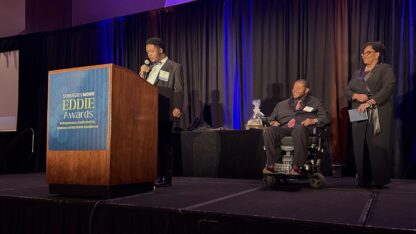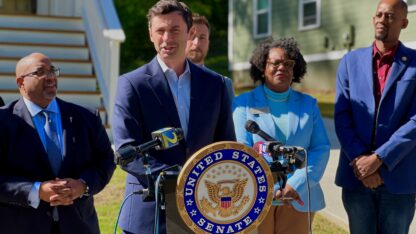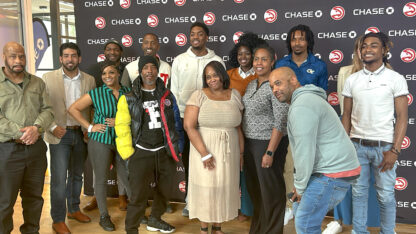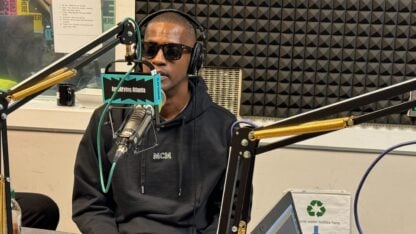The State Of Atlanta’s Fashion Scene, As Told By Its Designers
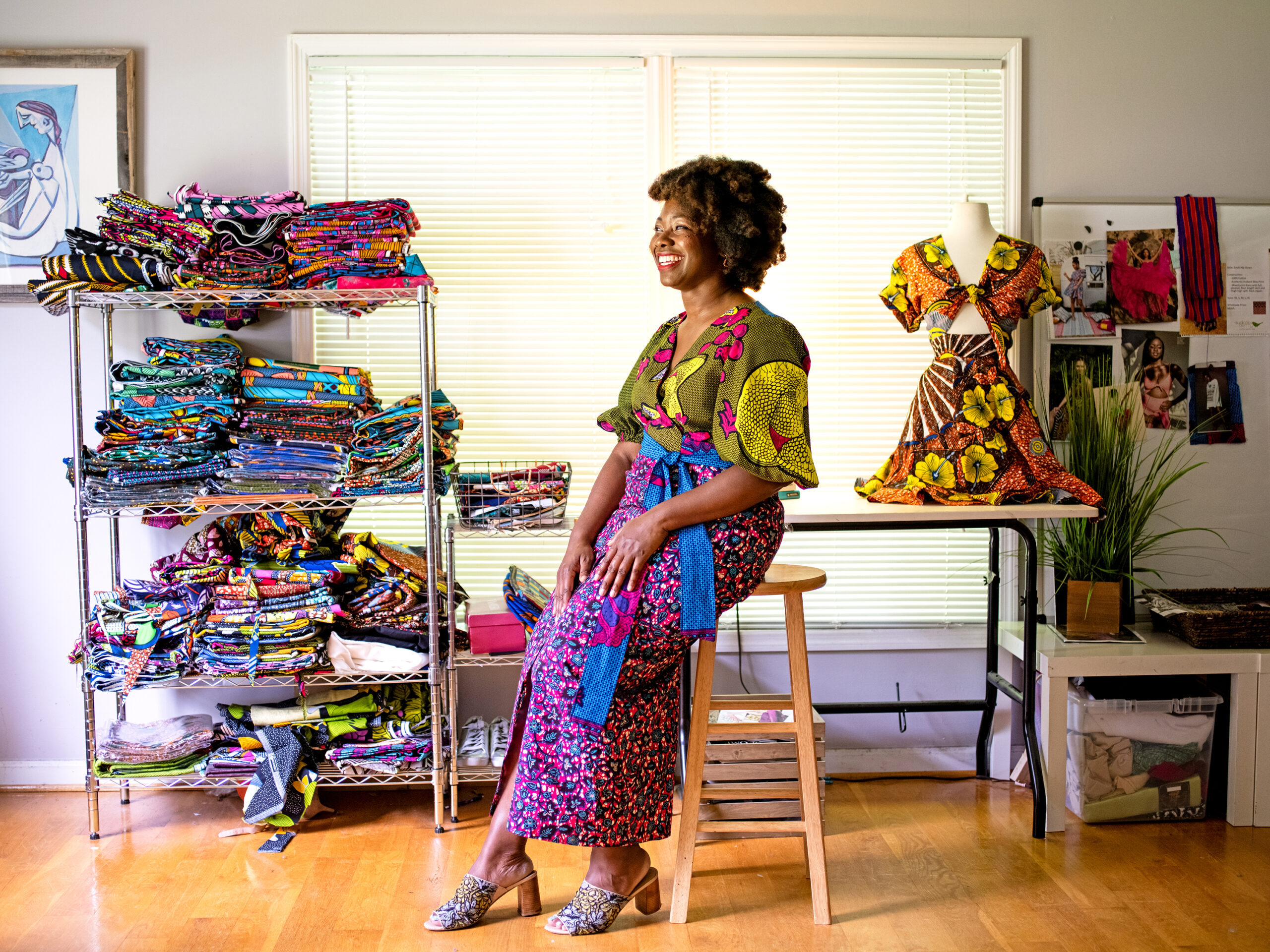
Charlene Dunbar created her own fashion line, Suakoko Betty, in 2010 as a celebration of the colors and patterns of her homeland, Liberia.
Johnathon Kelso / For WABE
Atlanta is bursting with culture. From its dining scene to its breakout performers and tech landscapes, Atlanta is on the map — and other big cities are paying attention.
But with all the strides we’ve made, there’s one industry the city has struggled to get a firm foothold in: fashion.
“Fine fashion” has a presence here, sure — you can throw a rock in Buckhead and hit a dozen luxury boutiques, from Gucci, Dior and Céline at Phipps Plaza to Tom Ford and Hermès at The Shops at Buckhead Atlanta. (Chanel recently added a new boutique to this roster, albeit in Alpharetta.)
And the city doesn’t lack for style. There is a Fashion Week. A handful of locals make a strong showing throughout various seasons of fashion design reality show Project Runway. The city boasts both a Savannah College of Art and Design campus along with the 10,000-square-foot SCAD FASH museum.
Yet, with all of the talent coursing through the city, it hasn’t reached the level of reverence — and support — that other creative industries have.
“Locally, it’s tough, to be honest,” says Charlene Dunbar. The Liberia-born fashion designer and former product developer created her own fashion line, Suakoko Betty, in 2010 as a celebration of the colors and patterns of her homeland. While she manufactures her clothes locally, she finds it easier to shop online for the fabrics and patterns she’s looking for.
Dunbar says it seems as though Atlanta is more likely to throw support behind our burgeoning music and tech scenes, “but for fashion designers? Not so much.”
You want to come up in the city you’re from.
Cedric Brown, an Atlanta designer
The contrast is clear when you look at the plentiful resources for industries like tech in Atlanta, with their multitude of hubs, investment groups, meetups, networking opportunities, and more. It can also be seen when you realize that, not only do events like New York Fashion Week bring in an international roster of press and buyers, but potentially hundreds of millions of dollars to the city’s economy.
To overcome the deficit, Dunbar has taken the trial-and-error route of talking to peers and finding out how they navigate similar issues, from budgeting and material sourcing to sales and marketing.
“Typically, the biggest struggle is sales and marketing,” she explains. “I feel like it’s easier to find resources in the beginning stages for things like setting up your website and other entry-level things. After that, it becomes more difficult.” While more grants for designers would be helpful, she says the real gap is with lack of mentorship. “Frankly, a lot of us rise and fall on what you don’t know and can’t see.”
In 2013, Rosa Thurnher and Regina Weir attempted to bridge the resource gap they saw when they founded the fashion incubator Factory Girls. Their goal was to be a one-stop shop for high-end apparel designers in the Southeast, providing them with studio space, pattern and sample makers, production resources and more.
Shortly after launching, they created an IndieGogo campaign to help them raise $50,000 (they ended up getting 11% to their goal). Factory Girls shuttered in 2016.
Felicia Loewry, a former partner at Factory Girls and showroom manager at AmericasMart, went on to launch the locally based Assembly Line, a full-service consulting agency for fashion designers.
“No one else does what we do,” Loewry says. “There are companies that do product development and manufacturing, but with us you get someone to hold your hand and give you resources throughout the entire process.”
Along with development and consulting, Assembly Line offers classes and workshops to help designers build their brands and establish their businesses.
I wanted to come back home because I love my life here. I have the freedom to do this in a way I wouldn’t if I was in another city.”
Megan Huntz, an Atlanta designer
While perhaps not on the same scale as bigger metropolitan cities, local resources for designers do exist — if you know where to look. Ragtrade Atlanta’s membership program (which runs between $25 and $225 a year) offers designers free access to monthly meetings and members-only events, networking and mentorship opportunities, reduced fees for workshops, and promotional opportunities for their brands.
The nonprofit organization Dream Warriors Foundation recently hosted a showcase of slow-fashion designers at the Atlanta Contemporary Arts Center. The National Black Arts Festival (NBAF), an organization based in Atlanta, offers various programs and awards to nurture nascent African-American talent.
Additionally, SCAD and The Art Institute of Atlanta both offer alumni-centered career-building services, job placement support, advising and more.
While support is one thing, community is another.
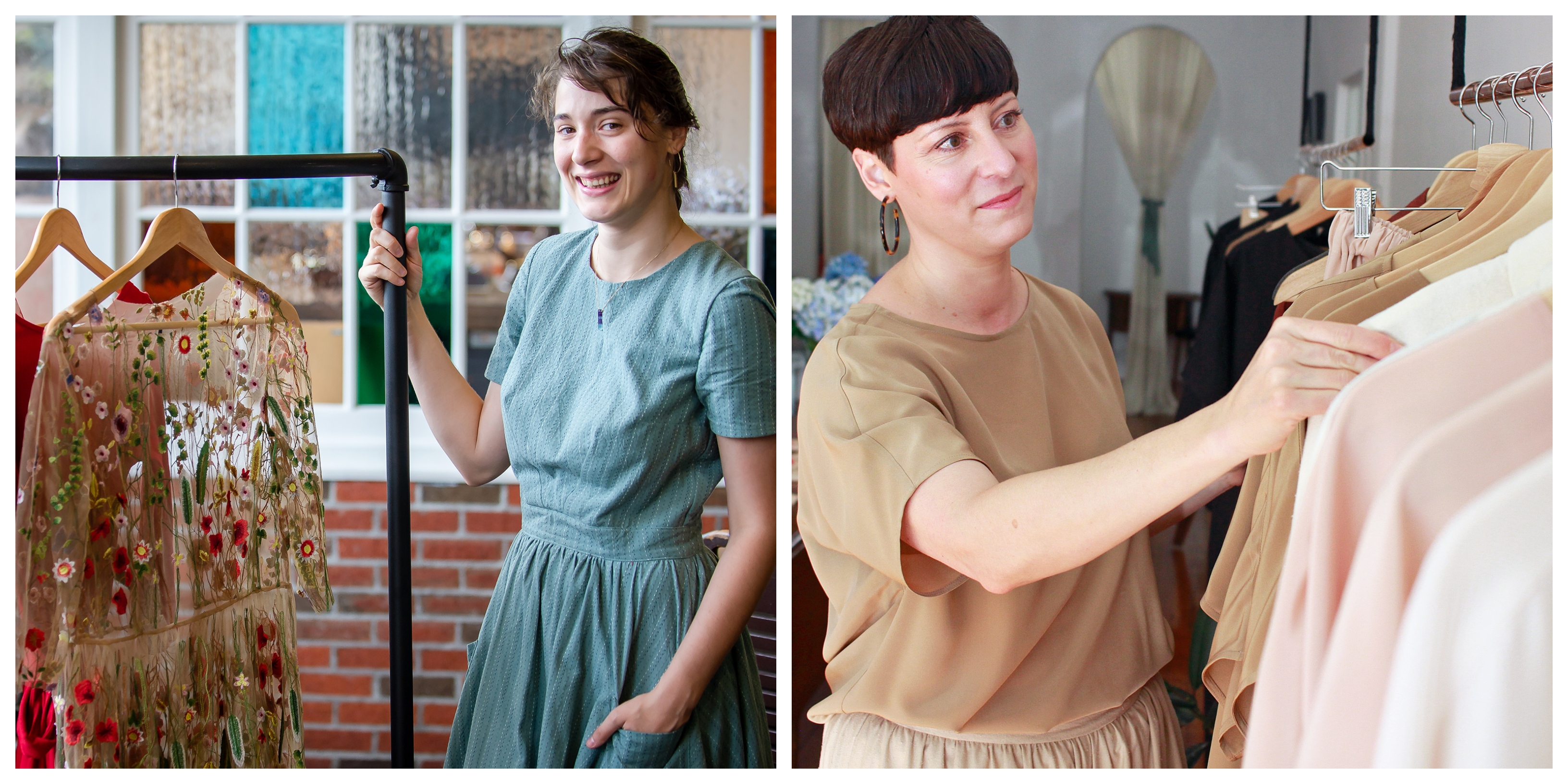
“I feel like the designers of the city truly support themselves,” says Brittani Bumb, owner and head designer of local pattern-making brand Untitled Thoughts, which focuses on Parisian-inspired sustainable garments.
She’s also a manager at fabric, pattern and sewing outpost Topstitch Studio & Lounge.
“Every event I have ever gone to revolving around fashion has been out on by some of the most hardworking and dedicated people I have ever met.”
For proof it’s possible to survive — and even thrive — as a local fashion designer, look no further than Megan Huntz. The Atlanta native studied industrial design at the Pratt Institute before spending about a decade abroad in Europe. She studied fashion at the Domus Academy in Milan, then entered the denim industry before pivoting from that career trajectory to launching her eponymous fashion label back in her hometown.
Huntz manufactures her pieces locally and runs her own Poncey-Highland boutique — she sells her collections at trade shows in New York twice a year.
“I have some great retailers I work with, and that’s a good percentage of my business,” says Huntz. “I opened the store in fall 2018, and the retail is almost outpacing the wholesale at this point, which is really cool. I wanted to come back home because I love my life here. I have the freedom to do this in a way I wouldn’t if I was in another city.”
Cedric Brown agrees.
“You want to come up in the city you’re from,” says the accessories designer behind Cedric Brown Collections.
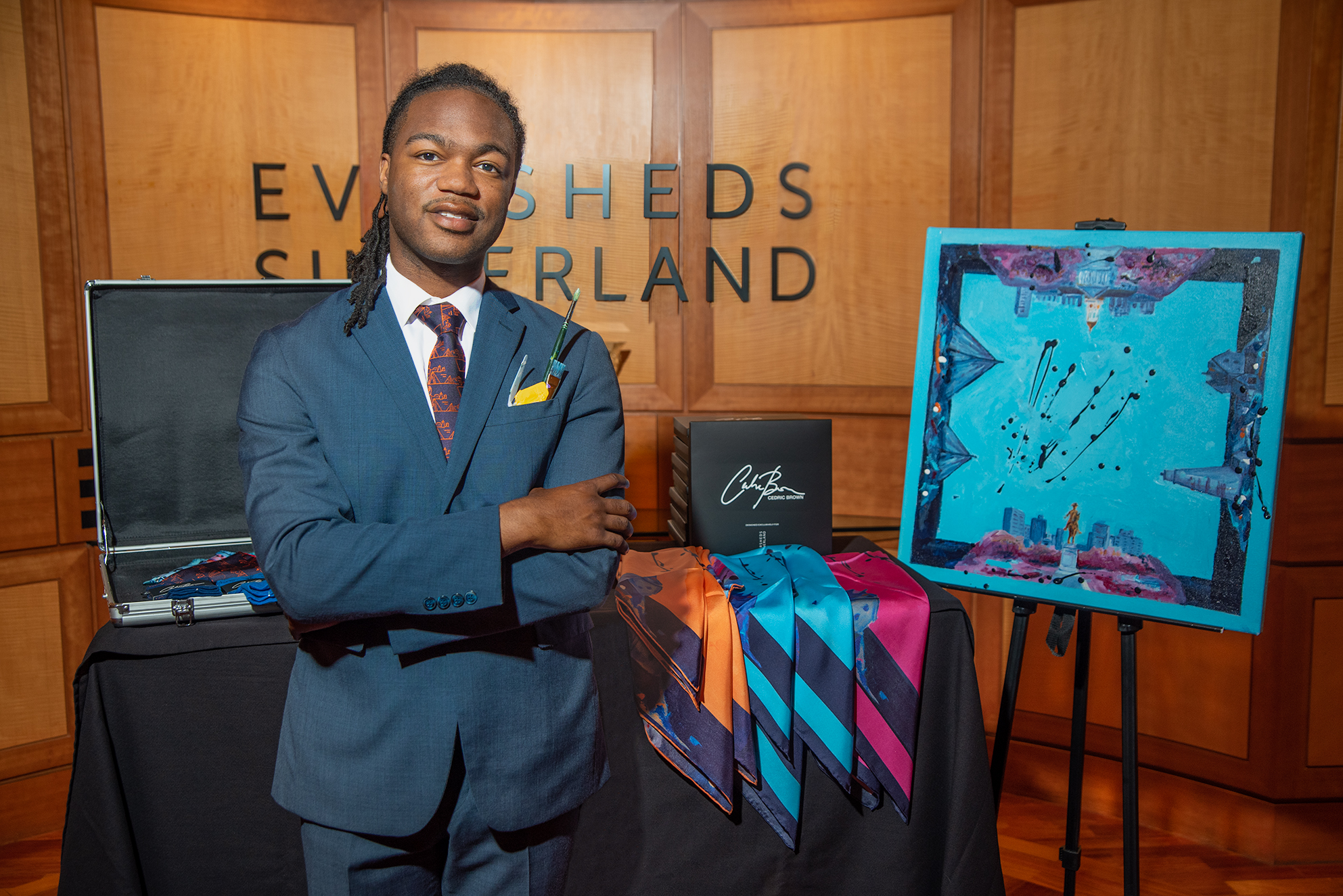
He launched his brand in 2015 at age 22 with his own funds and $1,510 from a successful Kickstarter campaign. Since then, he hasn’t slowed down. Brown — who looks up to fellow Southern designers like Billy Reid — sells his wares via his website, pop-up shops, trunk shows, art festivals, and through boutiques from Inman Park to Charleston, Chattanooga and beyond. He took part in Operation HOPE, a local (and free) 12-week entrepreneur training, and he makes use of other local resources such as Ragtrade, the U.S. Small Business Administration’s Atlanta office, and NBAF.
“In New York and D.C., they have fashion and business grants,” Brown says. “I feel like that or a residency could be helpful here in Atlanta.” He adds that an off-season fashion event that draws big retailers and media coverage could also help build relationships and “let them know we’re upcoming in fashion.”
That relationship-building seems to be a crucial piece of the design scene here in Atlanta. From sharing ideas and swapping supply resources to collaborations and more, there’s an overtone of camaraderie that runs through the city.
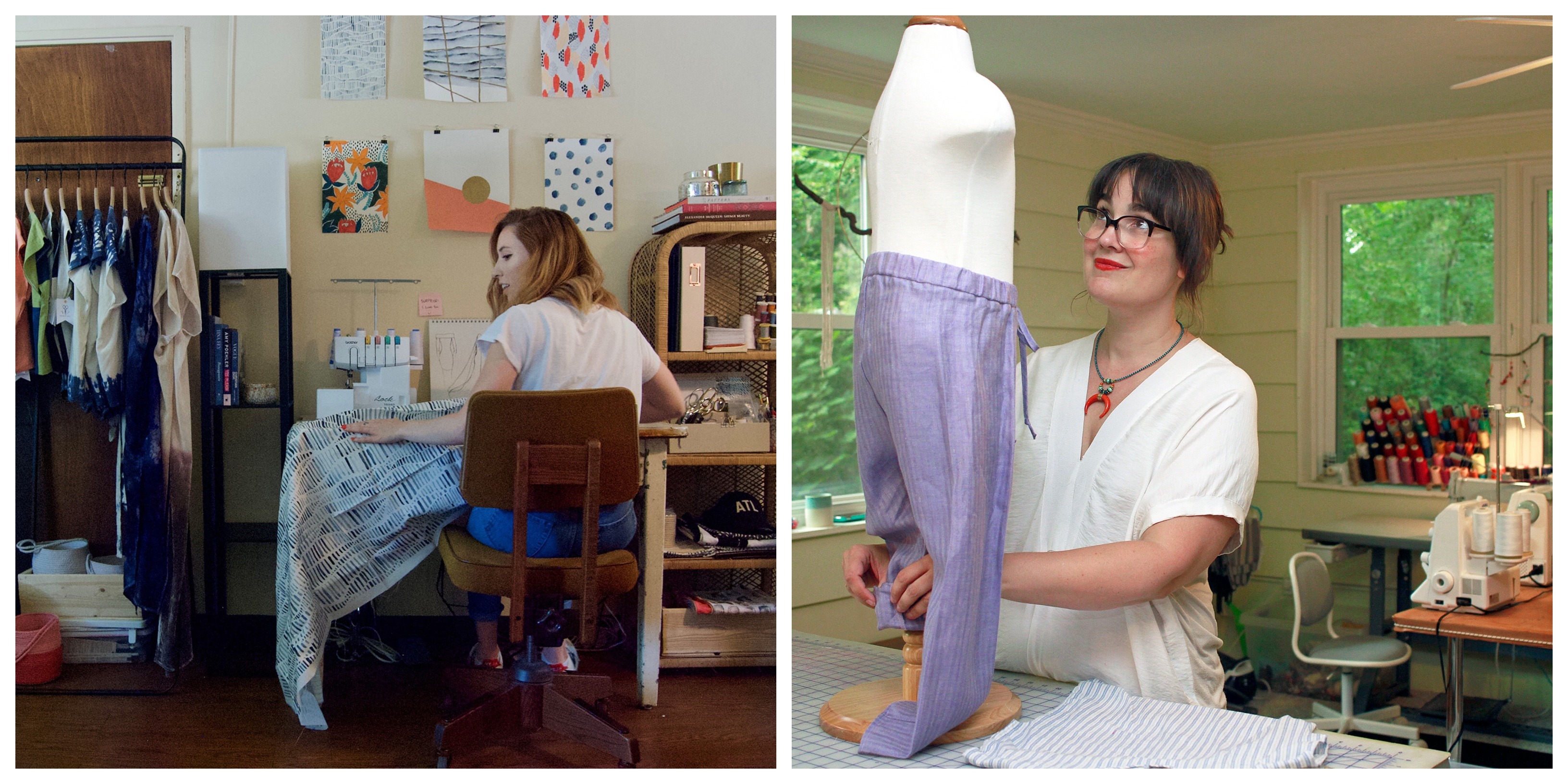
“It’s a really small network compared to New York and LA, but I think because of that, everybody knows each other and is trying to help each other out,” says Hannah James, a designer and Decatur native. After studying textile design at the University of Georgia, James’ eponymous hand-dyed line was born when she accepted a 100-piece order from The Beehive boutique in Edgewood in 2017.
Since then, she’s been part of pop ups at shops like Coco + Mischa, Citizen Supply, and Trinity Mercantile & Design. “I feel like everybody’s trying to give a spotlight and space to designers to grow and connect,” she adds. “It’s been very helpful for me.”
Thanks to the opportunities afforded by online retailers and e-commerce, designers no longer have to rely on local support to succeed — though it never hurts.
“I would just love to see more of an awareness in the city of the importance of locally designed and produced clothing,” says Laurel Thompson, a resident of Avondale Estates who runs the sustainably minded kids clothing brand Beya Made. “I would love to see more of our local boutiques buying from local designers and getting behind our fledgling scene in a big way.”
What Atlanta may lack in comparative resources and support, its designers are more than making up for through scrappiness, creativity, and coming together.
“I feel like it’s an open opportunity here — you go to LA and NY and it’s so competitive,” adds Brown. “They have resources, but it’s harder to get opportunities. I was in New York and I felt like, even if I became a big designer, I wouldn’t be happy there. I like the way of life here. I wanna be part of that.”




